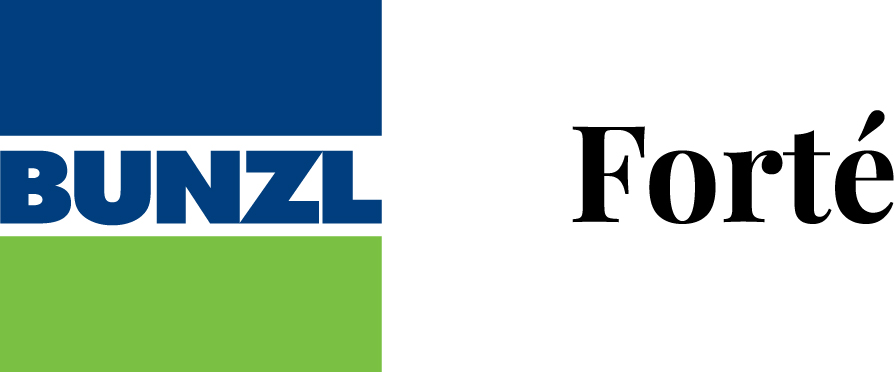In 2020, there was one word business leaders could not get enough of: procurement. With what felt like an overnight shift, procurement moved from a utility function to a role delivering strategic guidance to help businesses survive the impacts of COVID-19. Procurement teams worked around the clock to improve operational efficiencies and predict potential business and supply chain risks – all while maintaining existing supplier relationships.
However, the role of procurement has been evolving long before the accelerated supply chain demands began shining a light on the profession. Environmental, Social and Governance (ESG) principles in procurement processes have been growing in importance over the past five years to ensure that business with suppliers is conducted in a manner that aligns with Corporate Social Responsibility (CSR) strategies.
The impact of procurement in delivering value – far beyond simple cost savings and margin optimisations – is an evolution Bunzl has witnessed first hand. “The procurement area of the Bunzl business has always sourced the right product at the right quality and volume to deliver value and meet customer demands,” says Brendan Ahern, Director of Procurement at Bunzl ANZ. “However, procurement today is much more than that. It now aligns with specialist areas of the business, as part of our drive to meet those demands and expectations, including working closely with internal sustainability teams and management of supply chain risks.”

“procurement today [. . .] aligns with specialist areas of the business, [. . .] including working closely with internal sustainability teams and management of supply chain risks.”
Brendan Ahern, Director of Procurement at Bunzl Australia and New Zealand
Rethinking Supply Chain Management
Supply chain issues emanating from regional and global factors have continued to challenge procurement teams around the world. The war in Ukraine has had a destabilising effect on paper imports with new European Union guidance declaring that Ukraine timber, formerly certified by the Forest Stewardship Council (FSC®), no longer meets sustainable and legal forestry standards.
Other global factors impacting supply chains include shipping delays and labour shortages which have affected every continent, including the Americas, Asia, Europe and, in particular, Australia. Since Australia is a country that conducts 98% of its trade through its ports (compared to the global average of 90%), local procurement teams have rapidly felt the effects of the global supply chain disruption and increase in shipping container costs.
According to Ahern, procurement teams now must look for multi-sources of supply to mitigate risk and ensure long-term growth. “We have seen businesses with regional diversity in the supply chain control risk more effectively, as the pandemic peaked in different jurisdictions and at different times,” says Ahern. Procurement teams who implemented a risk aware approach to manage potential supply chain vulnerabilities were rewarded with improved supplier relationships and products delivered to cost and quality.
“The evolution of procurement within business moves it from its traditional utilitarian function to a highly strategic area, integral to the success of the bottom line of the business,” he says.
An Evolution to Sustainability
Today, sustainable practices have moved from being a nice-to-have policy to a must-have, with governments throughout the world looking to enforce ESG targets for business. Procurement is at the forefront of this trend – ensuring that the supply chain reflects all three elements of ESG principles and allowing businesses to include sustainable practices as part of the annual reporting process.
Environmental drivers have brought an increased focus on product and packaging so that they include recyclable and/or compostable materials and reflect a reduced use of plastics. When sourcing paper products for example, FSC® certification is increasingly becoming non-negotiable (read more on this here). Procurement leaders should also look to continually optimise shipping, reducing fuel consumption and minimising carbon footprint.
Social policies have developed and focused on modern slavery (read more on modern slavery policy here). It’s reported that more than 40 million people worldwide are estimated to be living in slavery with nearly 25 million of those in forced labour.
“more than 40 million people worldwide are estimated to be living in slavery with nearly 25 million of those in forced labour.”
International Labour Organization (ILO)
Businesses are responsible for ensuring sourcing is ethical and lawful. One way to ensure the labour force is protected is to run audits throughout the supply chain. As governance continues to come under the spotlight, businesses must be mindful of the continuous disclosure rules imposed by regulators. This includes improving production using solid data and reporting to business stakeholders and customers.
Procurement teams also work to help customers reach their own ESG targets. At Bunzl, we have plastic and sustainability experts who proactively support our customers with their sustainability challenges and sourcing.
How Data Informs Decisions
Following the rules of continuous disclosure and meeting strong ESG targets depends on reliable, accurate and timely information being available. Procurement teams have become adept at using data strategically to allow analysis and agile responses to supply issues. This empowers procurement teams to confidently make more informed, data-led decisions.
Bunzl uses data-led insights both internally and externally, providing best-practice solutions for the company – and their customers. “Data has always been important to business, but these days we are meeting not just our internal requirements but also assisting our customers to meet their sustainability targets. Data is vital to the sustainability of businesses, the planet and social responsibility,” says Ahern.
Contact your Bunzl Representative to find out how we can help you meet ESG targets.









